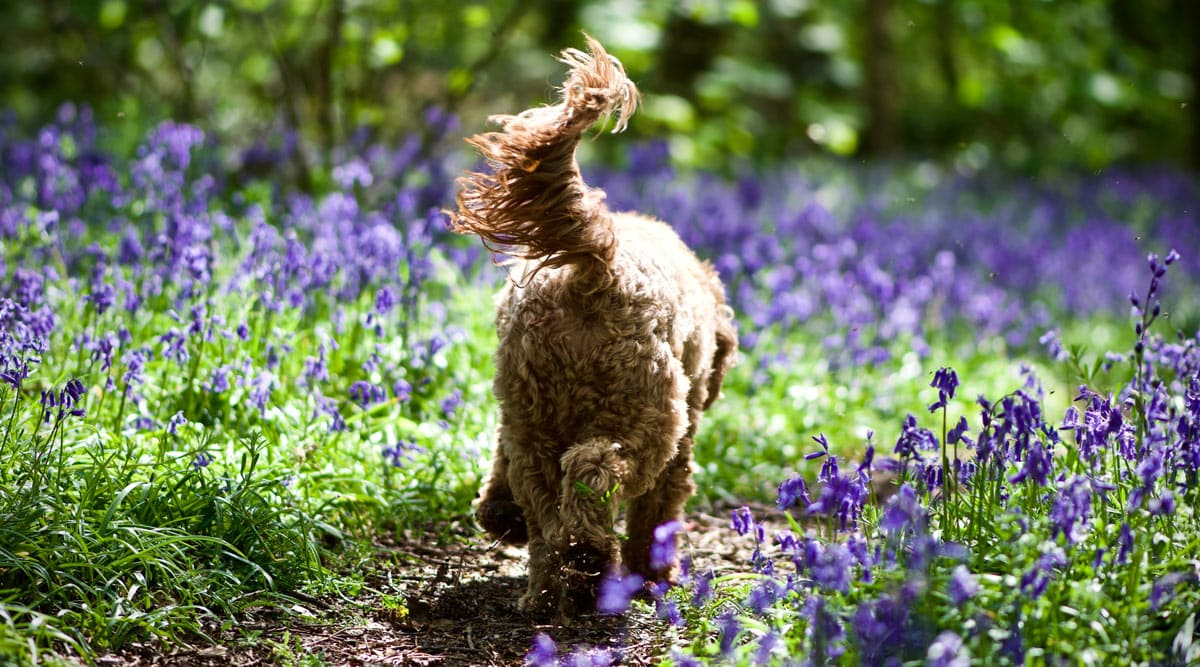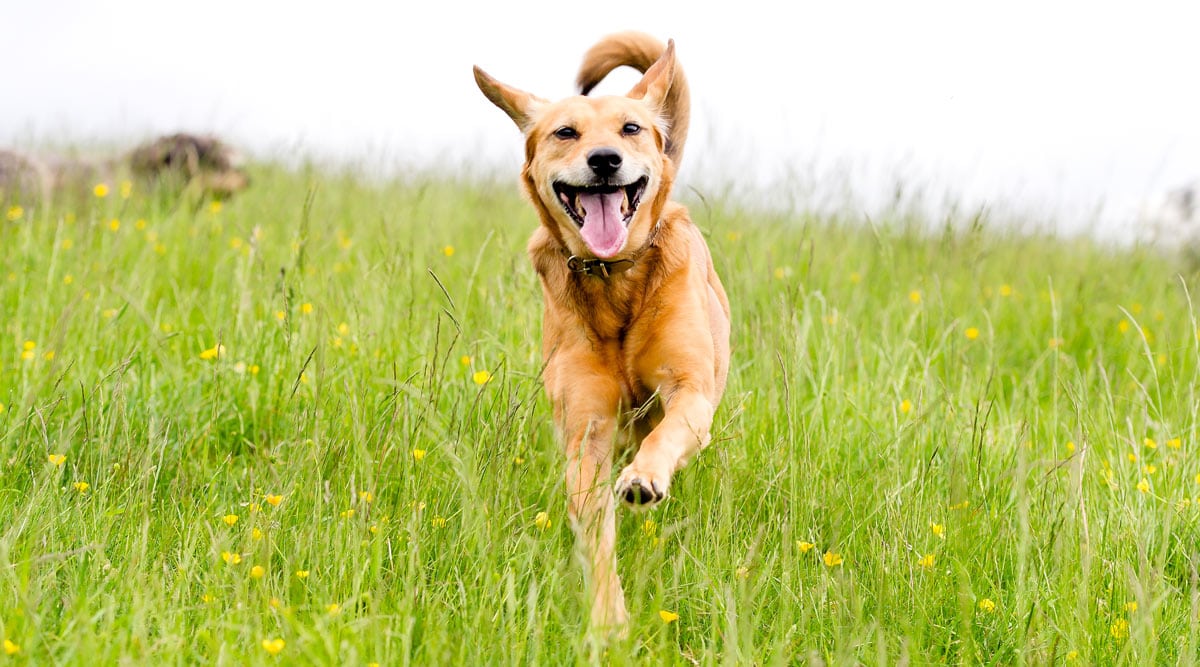Have you ever wondered if your dog consciously controls their tail wagging? You’re not alone!
The quick answer is that dogs can voluntarily move their tails. However, tail wagging is almost always an involuntary reaction to their emotions and environment.
In other words, most of the tail wagging and other movements you see happen naturally – your dog isn’t controlling them. Let’s take a closer look at why this is the case.
Contents
A Quick Overview of Dog Tail Movements
Before we discuss conscious and involuntary tail control, it’s important to understand how and why dogs move their tails.
Most people know that dogs use their tails as a form of communication. But wagging doesn’t just mean happiness!
Instead, tail wagging can express a range of emotions – from joy to anxiety, or even fear.
As we’ve explored in our dog tail meanings guide, our canine companions subtly tweak their tail wagging to communicate different feelings. The “message” a dog’s tail sends varies depending on:
- Tail position: Where the tail sits on a scale from lower to raised can tell us a lot about the type of emotion a dog is feeling.
- Tail stiffness: A rigid tail typically signals tension, while a relaxed tail indicates comfort in a situation.
- Wag speed: Fast wags can show a stronger emotion, whereas slower wags might hint at uncertainty.
- Wag breadth: Wide sweeping wags are generally positive, whereas narrow wags can indicate nervousness or even defensiveness.
- Wag direction: Wags biased to the left often indicate negative emotions, while a right-biased wag is linked to positive emotions.
Keep in mind that tail wagging is just one facet of canine communication. To fully grasp a dog’s feelings, it’s essential to consider their overall body language.
Also, remember that tails aren’t only for communication. Dog tails also help with balance, and can even be used as a rudder when swimming. It’s safe to say that these movements are not consciously controlled, in the same way that humans don’t think about arm positions when trying to balance.

Anatomy of a Dog’s Tail
Understanding how dogs might control their tails is easier when we’ve got a handle on the basic anatomy of a dog’s tail.
A dog’s tail is an extension of the spine. It’s a complex structure containing anywhere from 6 to 23 vertebrae, surrounded by layers of muscles, nerves (providing feeling in the tail), and blood vessels. There are also muscles at the base of the tail to help with controlling tail movements.
Of course, there is a huge diversity in tail types across different dog breeds. Some dogs have naturally short or curled tails, which can make tail-based communication more difficult. Dogs with docked tails have similar issues with communication, which is one of the reasons why The Dog Clinic is firmly against this practice.
Can Dogs Control Their Tail Movements and Wagging?
To cut a long story short, dogs can move their tail as both a voluntary action and an involuntary reaction to their surroundings.
For the most part, dogs don’t consciously decide to wag their tails. It’s an instinctual response to their environment or feelings.
Dogs certainly aren’t deciding the direction, amplitude, and speed of their wagging tails. Much like our own facial expressions, these movements occur naturally, mirroring the emotions the dog is experiencing.
Furthermore, dogs might exhibit involuntary tail movements as a reflex to physical sensations like itchiness or pain. These reactions are reflexive and not intentional responses to the stimulus.
That said, dogs do have the capability to control their tail movements consciously – at least to a certain extent. If they want to raise the tail or move it to one side, then they can take control of the muscles required to perform these actions.
A caveat is that some dogs have more control over their tails than others. As we mentioned earlier, some breeds have very short or curled tails. These dogs might have less control over their tail movements, as the range of motion is much smaller.
How Much Control Do Dogs Have Over Tail Movements?
Dogs have the most control over muscles at the base of the tail, allowing them to make larger movements with their tail. However, they cannot voluntarily move the tips of their tail separately.
This means that dogs can’t consciously decide to make subtle tail movements. For instance, they can lift and wag their tails, but are probably unable to make minor adjustments to the tail’s wagging direction. Nor can they consciously control the finer points of wagging, like stiffness.
Note: Dogs cannot “lie” or deceive with their body language. You should always listen to what they are trying to say with their posture, tail, facial expressions, and other behaviour.
Are Puppies Born Knowing How to Wag Their Tails?
Tail wagging is an instinctive behavior. Puppies usually start wagging at around 3 to 4-weeks old, although this can vary depending on the breed.
However, tail communication isn’t fully pre-programmed in dogs. While dogs might instinctively know the basics, puppies need to learn how to use their tails effectively to communicate. It takes observation, practice, and repetition for them to master the “language of the tail” and develop the ability to show a range of emotions.
The non-innate nature of tail wagging communication means that dogs can develop unique “tail languages.” Several factors, including breed, upbringing, socialization, and personality shape these individual differences.
This highlights the importance of socialising your puppy with a wide variety of dogs. The young puppy needs to learn how to communicate with dogs of different sizes, breeds, ages, and backgrounds.
Summary
Dogs use their tails to communicate various emotions. Although these tail movements are often instinctive responses, dogs do have some conscious control over their tail.
Interestingly, tail wagging is instinctive, but learning how to communicate with the tail is not innate. Puppies need to learn how to show different emotions, largely through interactions with their mother and litter mates.
Do you have any questions about whether dogs can control their tails? Please let us know in the comments section below.




